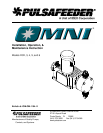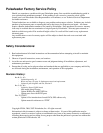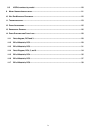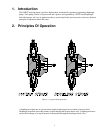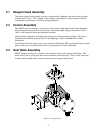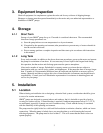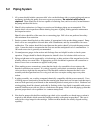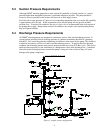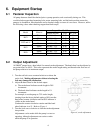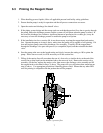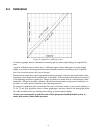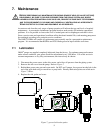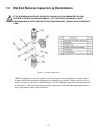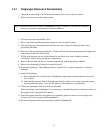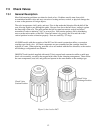4
5.2 Piping System
1. All systems should include a pressure relief valve on the discharge side, to protect piping and process
equipment, including the pump, from excess process pressures. An external relief valve is
required! There should be no devices capable of restricting flow (such as a valve) located between
the pump and the relief device.
2. Shutoff valves and unions (or flanges) on suction and discharge piping are recommended. This
permits check valve inspection without draining long runs of piping, making periodic maintenance
and inspection easier.
Shutoff valves should be of the same size as connecting pipe. Ball valves are preferred since they
offer minimum flow restriction.
3. Suction systems should include an inlet strainer, if appropriate for the product being pumped. Pump
check valves are susceptible to dirt and other solid contaminants, and any accumulation can cause
malfunction. The strainer should be located between the suction shutoff valve and the pump suction
valve. It must be sized to accommodate the flow rate and the anticipated level of contamination. A
100 mesh screen size is generally recommended.
4. Vacuum/pressure gauges in the suction and discharge lines are helpful in order to check system
operation. Gauges should be fitted with protective shutoff valves for isolation while not in use.
5. Piping weight must not be supported by valve housings or other portions of the reagent head, as the
resulting stresses can cause leaks. If appropriate, provide for thermal expansion and contraction so
that no excess force or moments are applied to the pump.
6. When making process connections, ensure that the check valve assemblies do not rotate as the
threaded connections are secured. It is critical, especially with plastic construction, that the check
valves not be too tight into the reagent head. The threaded connection between the check valve
assembly and the regent head uses on o-ring seal and does not require sealing tape or any other
sealant.
7. In piping assembly, use a sealing compound chemically compatible with the process material. Users
of sealing tape are cautioned to ensure that the entering pipe thread ends are not taped, and that tape is
removed from previously-used threads to the maximum practical extent prior to re-use. Both new and
existing piping should be cleaned, preferably by flushing with a clean liquid (compatible with process
material) and blown out with air, prior to connection to the pump. Debris from the piping system that
prevents proper check valve operation is a common startup issue.
8. Note that for pumps which utilize cartridge-type check valve assemblies, no thread tape or sealant is
required on the threads which secure the cartridge assembly to the pump reagent head. This area is
sealed with o-rings integral to the cartridge. Sealant on these threads can actually degrade sealing
capability.



